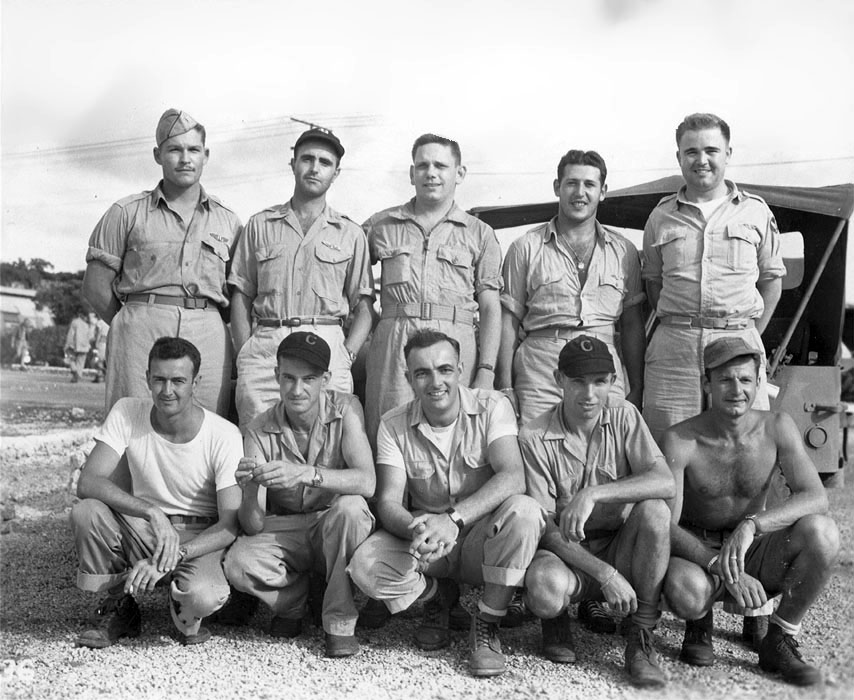Bockscar Crew

Staff Sgt. Buckley, Master Sgt. Kuharek, Sgt. Gallagher, Staff Sgt. DeHart, Sgt. Spitzer
On August 9, 1945, the Bockscar dropped an atomic bomb (the "Fat Man") on Nagasaki, instantly killing tens of thousands of people. This marked only the second time in history that the atomic bomb had been used.
Just as its counterpart the Enola Gay, the Bockscar had been altered to serve the purpose of carrying and deploying the heavy bomb. Adaptations included removing most of the armament; installing heavier racks to support the heavy bomb; and replacing the engines.
The plane was named after Frederick Bock, the plane's commander. However, on the day of the Nagasaki bombing, Bock switched planes with Charles W. Sweeney, whose regular plane was The Great Artiste. The Bockscar and its crew left Tinian in the Marianas Islands in the middle of the night. Its mission was to bomb the industrial city of Kokura, but the target was blocked by clouds and smog. The contingent plan was for bombing Nagasaki, so the plane flew to that city and dropped its cargo. This second bombing prompted the surrender of Japan and the war ended shortly thereafter.
The Bockscar was restored, and, in 1961, it went on permanent display at the Air Force Museum, located at the Wright-Patterson Air Force Base near Dayton, Ohio.
| Crewman | Position |
|---|---|
| Major Charles Sweeney | Commander |
| First Lieutenant Charles Albury | Co-Pilot |
| Captain James Van Pelt, Jr. | Navigator |
| Captain Kermit Beahan | Bombardier |
| Lieutenant Jacob Beser | Electronic Countermeasures |
| Staff Sergeant Ed Buckly | Radar Operator |
| Sergeant Abe Spitzer | Radio Operator |
| Master Sergeant John Kuharek | Flight Engineer |
| Sergeant Raymond Gallagher | Asst. Flight Engineer |
| Staff Sergeant Albert Dehart | Tail Gunner |
| Commander Frederick Ashworth | Weaponeer |
| 2nd Lieutenant Fred Olivi | Third Pilot |